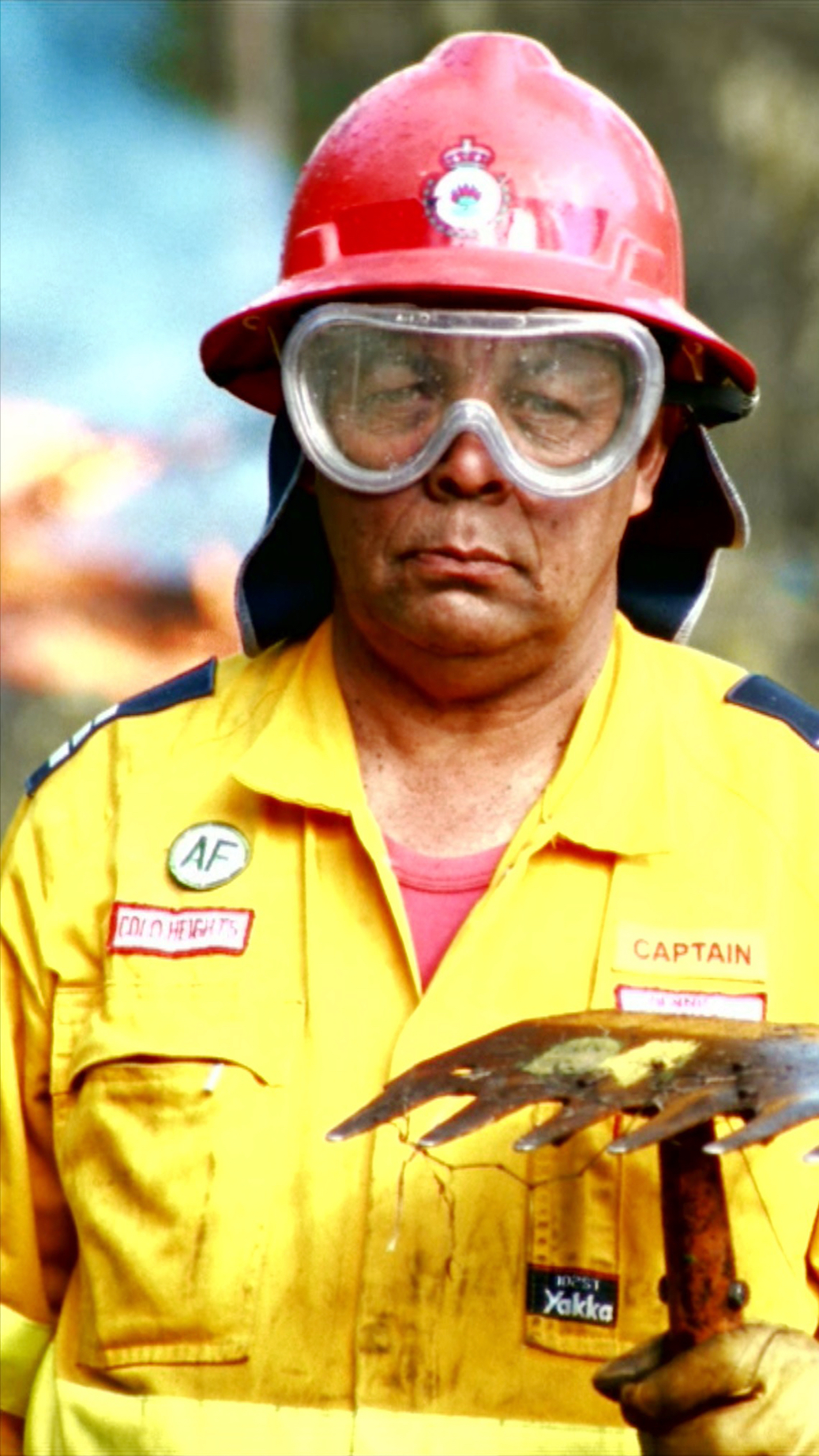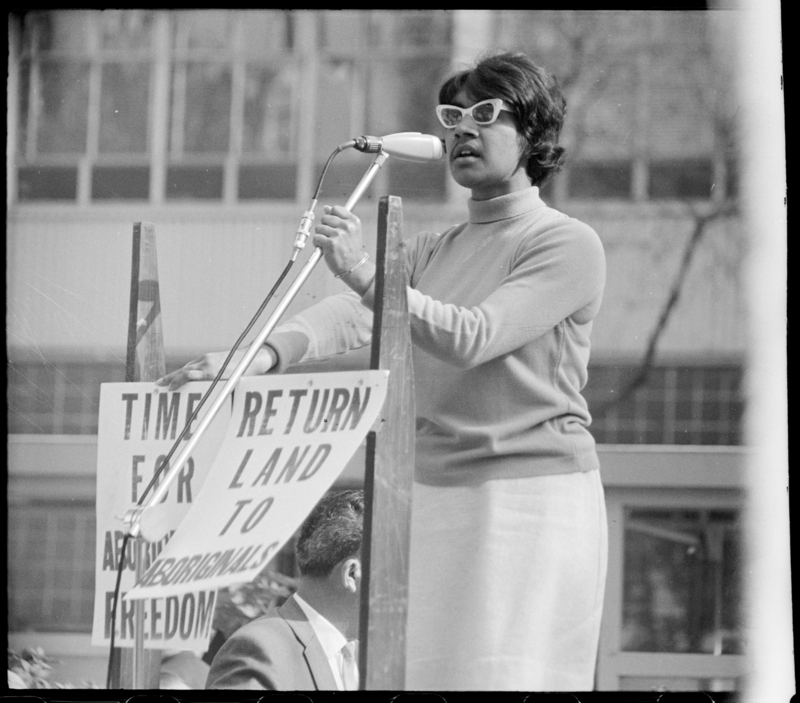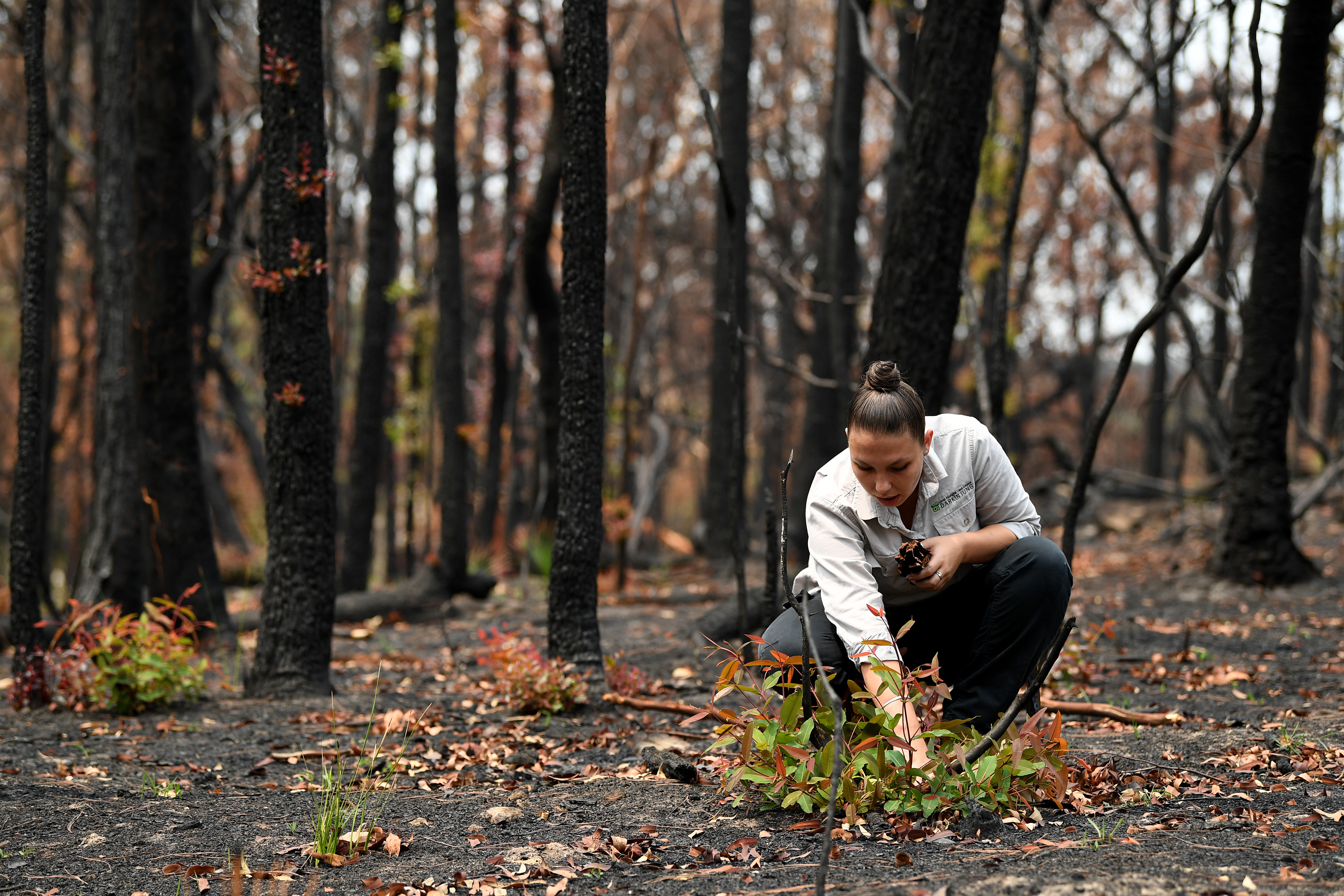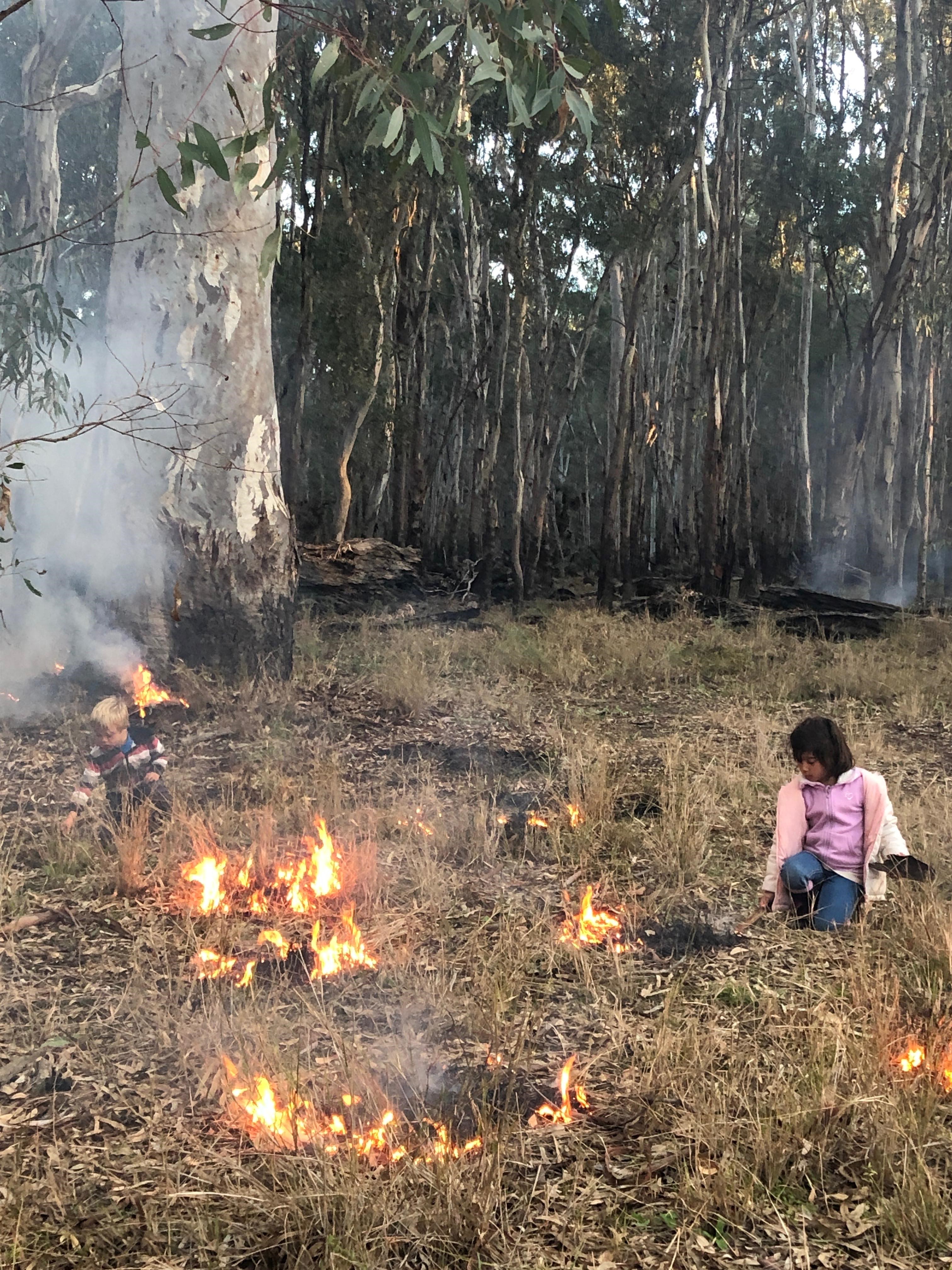Source: The Conversation (Au and NZ) – By Vanessa Cavanagh, Associate Lecturer, School of Geography and Sustainable Communities, University of Wollongong
Aboriginal and Torres Strait Islander readers are advised this article contains images and names of deceased people.
I remember brushing my teeth over the green enamel sink. I would gaze out the window at a prominent grandmother and ponder her age. This grandmother had soft pink skin, smooth and dimpled, and incredible curves that burled in places. She stood at least 25 metres tall.
She was one of the sentinel trees which stood strong on the property where I grew up in Colo Heights, northwest of Sydney, at the edge of Darkinjung Country.
Belonging to the Angophora costata family, she, like me, is part of human and non-human kinship networks that connect us with Country.
To begin to understand this connection, you might start by thinking about how every native tree on this property grows in its perfect place. Thousands of generations of evolution caused for it to grow right there. Each plant belongs to that very soil, and under that particular sky. Each plant is connected to the next, also growing in its own perfect way. Just like this grandmother tree, the plants are all families to each other. A community that is woven together with every element of nature participating.This is Country. It includes the plants, the animals, the weather, rocks, fire, soils, waters, air, all of planet Earth. The powerful celestial beings too. They are all crucially important, in their belonging place.
Humans are part of this community, evolving together. Our relationships with each other, human and non-human, helped us thrive as the longest continuous culture on Earth. There is much to learn from honouring this connection.
These are not new thoughts. I am not trying to be a clever person. Indigenous people have shared this story for millennia. Indigenous people have adamantly protested against greedy environmental destruction.

A layered coincidence
I returned home to Colo Heights in the first week of 2020 to review the damage the Gospers Mountain bushfire caused.
The Rural Fire Service had done a brilliant job protecting the main house.
But for this grandmother tree, the combination of ongoing drought and persistent flames ended her reign at the far edge of the yard. The sight of this old tree with her crown removed brought warm, stinging tears to my eyes. It was a deep hurt of losing someone far older and wiser than me. Losing someone who was respected and adored. Someone with knowledge I cannot fathom or comprehend. When I told my mum that evening she reacted similarly, a personal and family loss. To others she might just be a big tree.
Yet we know too, that Country is powerful and will recover. These trees return to the earth, and their legacy will regenerate, we each have our cycles.
It’s not inconsequential I’m having these experiences of fire right now. I’m an Aboriginal woman and scholar, researching the ways in which Aboriginal women are, and are not, involved in cultural burning practices in New South Wales. I explore and promote the layers of meaning — historical record, educational tool, and cultural expression — Aboriginal women’s stories reveal, such are present in my own stories.
A childhood immersed in nature
My parents bought our 25-acre heavily forested property in the late 1960s, 35 kilometres from the closest town. Buying this property in Colo Heights was important for Mum and Dad because they wanted their kids to grow up in the bush, to have that connection. They also wanted to have the security of owning a place of their own, away from departmental housing and government interference in Aboriginal cultural welfare. Thus, it became a place for extended family to come to, to avoid the controlling gaze of others.

My late father, a Wonnarua man, started a 40-year career as a labourer and heavy machine operator in the NSW Department of Main Roads as it was known then. He also volunteered in the local RFS over four decades, and he was captain for some of this time.
Mum is a Bungum Bundjalung woman, a life-long social justice advocate and a vocal feminist. Before having us kids, Mum was involved in the lead-up to the 1967 Referendum doing advocacy work and attending demonstrations. When I started high school, Mum returned to paid work in Aboriginal women’s refuges.
50 years hasn’t slowed Mum down. I can’t recall a childhood summer when my parents didn’t spend days volunteering at the RFS shed. It was something most families participated in, and a real strength of our rural community. My brother still volunteers with Colo Heights RFS. He is one of many Aboriginal fire fighters across the nation.
My parents gave me my love of the bush, and a strong sense of justice, which undoubtedly inspired me to pursue a career in environmental conservation.
At 20 years of age I secured my first job with the NSW National Parks and Wildlife Service. As part of the firefighting responsibilities of this role, I trained as a tree-feller and Remote Area Fire Team member — getting winched in and out of fires by helicopter.
I saw some amazing places while putting in fire containment lines, or mopping-up and blacking-out after bushfires. I’ve seen firsthand the devastation bushfires can wreck. But seeing the land around my childhood home destroyed, brought a different type of grief.

The aftermath
It has been one month since the fire passed through Colo Heights. Returning has been an incredibly emotional journey. With me is my partner, our two kids and their cousin who was evacuated from his home.
The fire had burnt right up to our letterbox and spread across most of the property. The fruit trees my Mum and Dad planted – blood plums, pears, bush lemons – all burnt out. A farm shed, water tanks, pipes and electricity poles, were also compromised. There is so much work to do.
The blackened ground is blanketed with a thick layer of dead leaves, dropped by the grandmother trees and her kin. The two-toned fallen leaf suggests some fell immediately after the fire, while others died and fell later.
Walking sounds like stepping on thousands of brittle eggshells. I hope if it rains, the leaf litter slows the erosion. This Country is wounded, it’s sandy and fragile.
As we follow the track that meanders towards the rear of the property, we notice a pink stain on the ground and low branches. During the fire event a water bomber plane dropped retardant to slow the fire’s spread and ferocity. Despite these efforts, many trees have been stripped bare of foliage.
Prior to the bushfire, the forest canopy would have created ample shade, making dappled light along the track. This time as we walk, the stark light of the brightly overcast sky causes me to squint as I look up at the non-existent canopy. I’m hurting for those old grandmother trees with their crowns removed.
There are signs of life, though. Familiar responses of native plants to fire: nuts bursting open and setting seed, vivid epicormic growth bursting through the charred bark. Birds were calling and we see a few small animals: beetles, a huntsman spider, a cicada shell hitched to a blackened tree. Occasionally there are patches of green.
But the fire has stripped away the forest kilometre after kilometre, across ridges and into gullies. There’s little for larger animals to eat, drink, or places for them to live.
Country is so dry, I wonder if much will survive. Country is already sick from drought; this fire adds to the illness.
Time to listen
Sitting quietly, we hear a large tree crashing down and echo through the gully. Another granny whose reign had ended.
“Will it grow back Mum?” my son asks.
The reassuring mother he needs in the face of all this devastation, replies: “I really hope that it’ll recover, but us humans need to do better in the way we live with Country. That’s why I take you and your sister to those Indigenous Fire workshops and teach you about Country.”
Returning to the bushfire site makes me reflect on all the training I received in the National Parks and Wildlife Service, and how it was founded on Western scientific methods.
At the time, I was one of only two Aboriginal people working in the department locally, and there were only a handful of women in these roles.
The positions I held in this department changed over the years. As I moved into heritage management and research roles, I was able to promote greater inclusion of Aboriginal women. In undertaking my PhD, I continue to empower Aboriginal perspectives in my work, specifically highlighting Aboriginal women.

Indigenous knowledge and local expertise must take precedence in the forward management of natural environments both in Australia and globally. As stated in the State of the Environment report:
the critical importance of Indigenous land management to the ongoing maintenance of biodiversity is increasing and becoming better understood.
This is true for all of Country: river and sea Country, sky Country and astronomical knowledge, human and non-human. Indigenous knowledge and systems provide valid models of sustainable existence.
The success of this requires Indigenous people and systems leading the process, and more roles for Indigenous people across environmental conservation practice, policy and research. Fundamentally, however, Indigenous knowledge should not be excerpted and cropped into models that don’t suit.
Fire will continue to be part of our relationship with Country, and we need to take notice of what isn’t working. Indigenous people have been contributing to debates on fire over several decades. There is growing interest in Aboriginal fire knowledge. Where cultural burning has been initiated, Indigenous people experience benefits, including in the south east of the continent.
Working together
The need for stronger, fairer collaboration is obvious. Indigenous and non-Indigenous people can work together. For example, my PhD research contributes to broader bushfire research, through its attachment to the NSW Bushfire Risk Management Research Hub.
The preliminary results of my research suggest Aboriginal women are, and wish to engage in cultural burning in NSW. The Aboriginal women I have spoken to demonstrate an awareness of gendered influences to their full participation, such as trying to gain access into a male-dominated field.
The women I’ve spoken to also want to respect cultural protocols and fire knowledge integrity. Perhaps the greatest outcome of my research thus far, has been the opportunity to promote and amplify that cultural burning can and should involve Aboriginal women where appropriate.
Women’s engagement must be encouraged for all Indigenous caring for Country activities. There must be opportunities made for Aboriginal voices, and Aboriginal women’s voices to be heard and listened to.

Mother
The intricate network of kinship between humans and the non-human needs to be restored to help heal Country and protect it into the future. Though regulatory frameworks are challenging, conversations about fire can provide a space to share knowledge and spark conversations about nature, risk and healing.
As an Indigenous person, researcher and parent (including as an Auntie within a large family) I want us to take better care of our Mother Earth. Future generations need Indigenous leadership, in this space and many other spaces, right now.
– ref. Friday essay: this grandmother tree connects me to Country. I cried when I saw her burned – http://theconversation.com/friday-essay-this-grandmother-tree-connects-me-to-country-i-cried-when-i-saw-her-burned-129782










